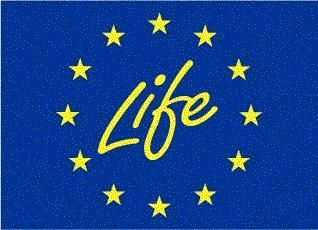| 1. What is the IPPC Directive? |
The IPPC stands for Integrated Pollution Prevention and Control and is the European Commission’s regulatory regime for protecting the environment through a single permitting process applied to specific industrial installations. This Directive (96/61/EC) adopts an integrated approach in pollution bringing together the protection of land, air and water from industrial activities. It goes beyond the initial task of permitting, including compliance monitoring, permit reviews, variations, transfers, through to the restoration of sites when industrial activities cease. All installations covered by Annex I of the Directive are required to obtain an authorization (i.e. permit) from the authorities in the EU countries. If they do not have a permit, they are not allowed to operate. Processes and technologies must be based on the use of BAT, which balance the costs and benefits to the environment. This may result in substantial environmental improvements.
|
2. What is the IPPC Directive? |
The fifteen old EU Member States were given a deadline until the end of October 1999 to adjust their national legislation in line with the IPPC Directive. The ten new Member States had to transpose the IPPC to their National Legislation by the 1st of May 2004 which was the accession date. Several old Member States were very late in transposing the Directive, but by May 2004 all 25 Member States had fulfilled this basic obligation. However, some of them have incomplete legislation that still needs to be improved.
Since October 1999, the Directive applies to all new installations, as well as existing installations that intend to carry out changes that may have significant negative effects on human beings or the environment. It does not immediately apply to other existing installations. These have been granted an additional 8 years of grace. However, some EU countries already have BAT based permitting systems also for this category. Exactly the same rules apply to all 15 old EU countries. Four new Member States (Poland, Slovenia, Slovakia and Latvia) have received an extra transition period (until 2008-2012) for meeting the requirements on BAT in certain specified existing installations.
|
| 3. Who are the principal players in the framework of IPPC? |
The principal players involved in IPPC activities are the following :
- The licensing authorities in the EU countries, which issue permits based on BAT.
- The European Commission and in particular the Environment Directorate-General and its unit G.2 ("Industry") whose task is to make sure that the Member States apply the Directive as anticipated.
- The Member States’ experts who participate in the exchange of information on BAT. They come from national environmental protection agencies or similar organizations.
- The industry experts who participate in the exchange of information on BAT.
- The environmental organizations that participate in the exchange of information on BAT.
- The Information Exchange Forum, which together with the European Commission organizes the exchange of information on BAT. It consists of representatives of EU Member States, industry, environmental organizations and the European Commission.
- The European IPPC Bureau at the EU Joint Research Centre in Seville (Spain)
- The IPPC Experts Group and the IMPEL network. These are forums for discussion between national authorities for issues related to the implementation and enforcement of the Directive.
- The public. According to Article 15 of the Directive, the public shall have access to (a) permit applications, (b) permits, (c) monitoring reports and (d) the EPER. In addition, BREFs are publicly available on the site of the European IPPC Bureau. The active participation of the public at large is essential in order to drive industrial environmental performance forward. Directive 2003/35/EC further strengthens the rights of the public in the context of permitting procedures.
|
| 4. Which are the main obstacles encountered by the Member States in the implementation of the IPPC Directive? |
- Inadequate or insufficient transposition of certain Directive requirements
- There is no definition of ‘Best Available Techniques’. This complicates the drafting of the conditions required in order to obtain a permit.
- The list of activities covered is not complete
- Within the conditions of the permit, it is not obligatory to consider the technical characteristics of the installation under investigation, its geographical location and the local environmental conditions
- The information provided regarding the requirements for a permit application is insufficient and may be a cause of controversy.
- The requirements related to the monitoring and reporting activities are inadequate
- There is no provision to ensure compliance by existing installations no later than October 2007 and subsequent periodical review of permits
|
| 5. Which are the industries which are specified within the IPPC Directive? |
- Energy industries (e.g. power stations, oil and gas refineries)
- Production and processing of metals
- Mineral industry (e.g. cement works, glass works)
- Chemical industry (organic, inorganic, pharmaceuticals)
- Waste management (e.g. landfill sites, incinerators)
- Other activities such as paper and pulp manufacture, fabric treatment and tanning plants, slaughterhouses, food and milk processing and treatment installations, intensive livestock rearing units and installations handling organic solvents .
|
| 6. What are the requirements for the operators which are specified in the Directive? |
Operators are required to show that they run their installations in a way that prevents emissions to the air, land, water or, where this is not realistic, reduces them to a minimum. In doing this, operators must apply the following principles :
- BAT to minimise and recycle emissions and waste and conserve energy
- Prevent accidents and limit their environmental consequences
- Return the site to a satisfactory state after operations cease
|
| 7. Describe what is meant by Best Available Techniques? |
The term Best Available Technique (BAT) denominates the most effective technology that is available for a certain industrial sector to obtain a high level of environmental quality. This technology should be technically and economically feasible for the relevant sector, and at the same time should ensure the highest possible environmental protection. The following options will be considered when BAT for a given sector is identified [10]:
- The use of low waste technology
- The use of less hazardous substances
- Enhancing the recovery and recycling of substances generated and used in the process, and of waste where appropriate
- The energy efficiency of the process
|
| 8. What are the benefits of the implementation of the Directive for the industries? |
-
Greater awareness and control over the polluting substances emitted from the installation
-
Reduction of risks associated with industrial operations, thus making the company more attractive to investors
-
Greater managerial control and awareness of the resource flows in the company, such as energy use, which may lead to resource savings and financial gain
-
Better relations to stakeholders associated with the company due to the ability to inform about environmental issues
-
A major help on the way to implementing the advanced environmental management tools that will enable companies to open the doors to new strategic eco-friendly market areas
-
Possibilities of marketing environmental awareness in the international marketplace
|
| 9. What is the role of the public in the whole process? |
The participation of public is envisaged within the Directive through an amendment and it is considered an essential element of the Directive. According to Article 15 of the Directive, the public must have access to (a) permit applications, (b) permits, (c) monitoring reports and (d) the EPER. However, the level of public involvement differs from Member State to Member State since some countries widely disseminate the application permit process, while other countries have a more restricted approach .
|
| 10. What is the required process for obtaining a permit for an industrial installation falling under the IPPC? |
The procedure begins with the preparation of an application by the operator. Once the regulator receives the application, he has to decide whether or not to provide this licence. His decision will be based on expert judgement provided by various “statutory consultees” who will examine whether the application covers satisfactory the following environmental issues:
- Compliance monitoring
- Assessment of polluting releases and the identification of BAT
compliance with other EU Directives, Community and national
- Environmental quality standards (EQSs) and domestic regulations
- Energy efficiency, waste minimisation and management
- The prevention of accidents
- For landfills, compliance with the requirements specified by the landfill Regulations
|
| 11. What are the issues which a permit should cover? |
- The installation and its activities
- The raw and auxiliary materials, other substances and energy used or generate by the installation
- The sources of emissions from the installation
- The conditions of the site of the installation
- The nature and quantities of foreseeable emissions from the installation into each medium and the identification of the significant impacts of the emissions to the environment
- The proposed technology and other techniques for preventing or at least reducing emissions from installations
- Measures for the prevention and recovery of waste generated by the installation, where necessary
- Further measures planned to comply with the general principles of the basic obligations of the operator
- Measures planned to monitor emissions in the environment
|


